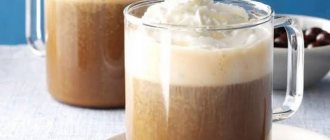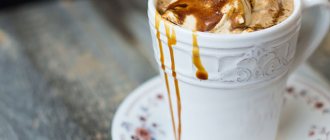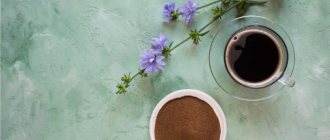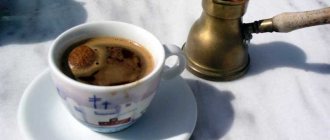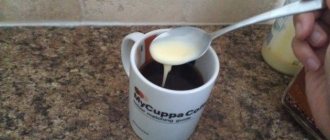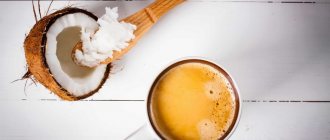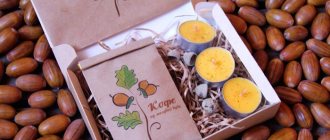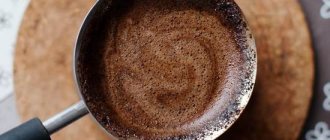The matcha craze began many years ago when Gwyneth Paltrow spoke in an interview about her firm decision to give up coffee and switch to this tonic drink.
Until this moment, only a handful of vegans and fans of Japan knew about matcha, and ordinary citizens treated lovers of green powder as sectarians.
However, a lot of time has passed since then, and a healthy lifestyle has become as integral a part of glamor as a selfie or high heels.
Today, lattes are made with matcha powder in the most glamorous cafes in different capitals of the world, food bloggers make matcha ice cream and matcha cupcakes, and beauty bloggers do their best to advertise homemade matcha masks and matcha scrubs.
Is this Japanese tea?
Matcha is primarily associated with Japan, but this tea actually comes from China. The history of matcha can be traced back to the Song Dynasty - it was then that Buddhists began making powdered tea from leaves grown in the shade. After steaming and drying, the leaves were ground into powder and green tea powder was obtained.
It was only in 1191 that the monk Eisai brought matcha to Japan, and it immediately took root in Japanese culture and became part of the rituals of Zen Buddhism. Over time, matcha lost popularity in its native China, but in Japan, on the contrary, it fell in love with the upper class and became an integral part of the tea ceremony.
Blue matcha latte
The blue matcha latte recipe is extremely simple. The heavenly colored drink can be made by adding powdered flowers of Clitoria trifolate, also called blue Thai orchid or butterfly pea.
What to do:
First, strongly brew the ground Thai flowers, then make a matcha latte according to the first two recipes. If you want more sophistication, sprinkle some lavender flower powder on top. To make a blue matcha latte, you can use any plant-based milk, but this drink is especially delicious with soy or coconut milk.
How to get matcha
Matcha is obtained from the top leaves of evergreen tea trees. 20 days before harvest, the bushes are placed in the shade, hiding the tea leaves from direct sunlight. Low light slows down the growth process of leaves, making them darker due to higher levels of chlorophyll (green pigment) and amino acids. This growing process creates a special biochemical composition that gives matcha many beneficial substances. The tea leaves are then picked by hand and steamed, thereby stopping the fermentation. After processing, the leaves are dried - this is how the raw material for tencha powder is obtained. This, in turn, is ground into a fine powder, which is called matcha.
Brewing utensils
The traditional Japanese tea ceremony for preparing Matcha is strictly regulated. To properly prepare a jade drink, you will need a special set of utensils:
- ceremonial ceramic bowl (chavan);
- bamboo whisk for whipping (chasen);
- bamboo spoon (chasaku).
Without the listed items, you can also prepare Matcha at home. However, the Japanese say that metal cutlery is not suitable for this ceremony.
Additionally, using traditional utensils and the method of preparing green tea is relaxing and soothing. A person is taken over by a peaceful state. This helps to evaluate the true organoleptic properties of the Matcha.
Ceremonial ceramic bowls are made from clay and covered with a plain glaze. The volume of such a bowl is 170–180 ml. The shape is smooth and spherical. Ideal for whipping jade drink. Remember to wash the bowls before and after each use.
The whisk is made by hand from a single piece of bamboo. The chasen traditionally has 100 teeth. This is the most recognizable item for the Japanese tea ceremony. Nothing else can create the smooth and velvety texture of Matcha. After use, do not leave chasen in water. There is also no need to wipe the whisk. Allow the whisk to dry naturally.
The bamboo spoon has an unusual shape and appearance. The chasaku is 16–18 cm long. This spoon is also made from a single piece of bamboo.
Don't know how to choose a good jade drink? Read the article Types of Matcha tea.
How to cook without a whisk?
A set for brewing Matcha is a rarity for our country. It is not available in every home. Therefore, the question is by no means an idle one. You can do without a bamboo whisk. However, keep in mind that the taste of the jade drink will suffer from this.
Any handy device for whipping products will do. The main thing is to get a characteristic foam.
Minimalists use a regular dinner fork. People with imagination use a whisk to beat eggs. More complex technical solutions are also possible: mixer, shaker, French press, manual or automatic cappuccino maker.
Varieties
Ceremonial variety
To make ceremonial matcha, the youngest and most tender leaves of the bush are used. This is the variety used in Buddhist ceremonies, and lovers say that ceremonial matcha has a hint of umami in its taste.
Premium grade
Premium matcha tea is not as sweet as ceremonial tea, but not as intense as culinary tea. This variety is also rich in all nutrients, but the leaves for it will be harvested a little later, so its taste is more intense and more bitter than the ceremonial variety.
Culinary grade
Leaves for culinary matcha are also collected from the top of the bush, but last. The taste of this variety is more pronounced and tart, which is why it is most often used in baking, making desserts and smoothies.
The benefits and harms of matcha
Matcha is in no way inferior to coffee and classic green tea. The drink invigorates the body and spirit, while keeping the nervous system relaxed. This quality of matcha is valued by Buddhist monks because it helps clear the mind and set the mood for meditation. The amount of catechin in matcha is a hundred times higher than its concentration in regular brewed black tea. For matcha to benefit the body, you don’t have to just drink it:
- The green powder is used to make tooth powder and paste. Tea strengthens gums and prevents tooth decay.
- As part of cosmetic masks and scrubs, matcha helps cleanse the skin and even out the color. This is a good remedy for lifting and combating various rashes on the face.
- In drought and heat, matcha will be an excellent tonic.
For healthy people, there are no contraindications to consuming matcha. The only exceptions are allergies to green tea and sleep problems. For insomnia and other disorders, matcha should be drunk only in the morning or afternoon.
Contraindications
Despite the large number of useful substances, matcha has contraindications due to its caffeine content. Tea should not be drunk by children under 12 years of age, and the drink cannot be combined with many medications:
- hormonal contraceptives;
- antidepressants;
- tranquilizers;
- drugs for the treatment of diabetes;
- antibiotics;
It is not recommended for pregnant and breastfeeding women to drink matcha. As a last resort, it is advisable to consult a doctor and determine the permissible amount of drink. Consultation with a specialist is also necessary in cases of long-term medication use. Matcha may interfere with the absorption of medications and reduce the effectiveness of treatment.
Don't drink matcha when you're hungry, as this can lead to nausea and vomiting. Gastrointestinal ulcers are also a contraindication. In addition, matcha interferes with the absorption of iron in the required amount, so people suffering from anemia should not drink it.
Beneficial features
By using whole leaves to make matcha, the tea powder has a high concentration of polyphenols (powerful antioxidants), flavonoids, which have a range of medicinal properties (from cardiovascular benefits to anti-inflammatory effects), amino acids and phytonutrients, and catechins.
Matcha contains 100 times more epigallocatechin than any tea; This antioxidant is believed to be more powerful than vitamins C and E. Epigallocatechin has been scientifically proven to help prevent cancer, promote weight loss, and have antibiotic properties.
Another important component of matcha is L-theanine. It is responsible for the production of dopamine and serotonin, which affect the brain and mood, as well as alpha waves, which help you relax without causing drowsiness.
Matcha also has a fairly high caffeine content, but thanks to L-theanine, caffeine is absorbed more slowly, so the energy effect is achieved gradually, without causing a sharp rise in blood pressure.
Why is it so popular today?
At one time, matcha latte was widely known only among vegans, but at some point, American actress Gwyneth Paltrow mentioned this tea in an interview, after which the drink became popular in the United States, and then in European countries. The fact is that in its invigorating properties it is similar to coffee, and its beneficial qualities are incomparable to anything else.
Beneficial features
It was noted above that, thanks to its powder form, matcha retains the largest proportion of vitamins and microelements. Due to its composition, tea can affect the body in the following ways:
- a high concentration of antioxidants helps fight wear and tear and aging of the body, and also strengthens the skin, making it resistant to ultraviolet radiation and aggressive external environments;
- increases the level of immunity and resistance to ARVI;
- has the same invigorating and stimulating effect as coffee, but at the same time has a more gentle effect, calms and normalizes the nervous system;
- accelerates metabolism due to faster breakdown of fats;
- lowers cholesterol levels, equalizes blood pressure, and ultimately reduces the risk of cardiovascular diseases;
- removes waste and toxins from the body, prevents the development of urolithiasis.
The beneficial properties of matcha latte are maximized thanks to its powder form. In addition, it is customary to drink tea with sediment at the bottom of the glass, so that all the important elements enter the body.
Taste characteristics
The matcha itself has a rich, unique taste that is completely different from the taste of regular green tea. In addition to bitter notes, tea has a sweetish-fresh, “sticky” taste, which is why the Japanese widely use it as a component of sweets.
Milk makes the taste of matcha softer, creamier, so this drink will appeal not only to fans of green tea, but also to lovers of latte or cappuccino coffee.
Elena Malysheva in her program talks in detail about the correct and real Matcha Latte tea, and teaches how to choose it correctly, brew it and drink it.
Calorie content
The caloric content of tea greatly depends on the presence of additives, the fat content of milk and the caloric content of sweeteners. On average, 100 ml of classic matcha latte contains:
- proteins – 3 g;
- fats – 2.8 g;
- carbohydrates – 10 g;
- calorie content – 78 kcal.
A lighter version may contain only 50 calories, so the calorie content of one cup (200 ml) of a tasty and healthy drink is estimated at 100-150 kcal.
Are there any contraindications?
Matcha latte does not have any special contraindications, but it is worth considering that it contains milk, which may be contraindicated if you are lactose intolerant. In reality, there is nothing wrong with this, since the tea recipe involves the use of not only cow’s milk, but also any plant milk.
You also need to remember that matcha contains a high concentration of caffeine, so tea should be drunk with caution in the following cases:
- age up to 12 years;
- period of pregnancy and lactation;
- the presence of chronic gastrointestinal diseases;
- taking antidepressants or tranquilizers;
- taking antidiabetic drugs.
Matcha lattes may cause severe nausea if consumed on an empty stomach. In addition, this tea can affect the absorption of iron, so it is contraindicated for people suffering from iron deficiency anemia.
How to make matcha tea
To prepare a traditional matcha, you will need a chawan (chawan) - a bowl for Japanese tea drinking, a measuring spoon and a special whisk - chasen, made of bamboo, with which the tea is whipped into foam.
And also 2 grams of matcha tea and 70 milliliters of water. Pour boiling water into the chavan and whisk it with a whisk. This is necessary in order to heat the container in which you will cook the matcha.
Wipe the dishes dry.
Add two scoops of matcha. This is approximately 2 grams of tea per serving of matcha. You can also sift the powder through a strainer to make it easier to whisk.
Pour in a small amount of hot water and start whisking until all the powder has dissolved.
Pour in the rest of the hot water and continue whisking. The longer you beat, the denser the foam will be.
Matcha should be served and drunk immediately after preparation, otherwise the powder will begin to settle to the bottom of the cup and the tea will lose its full flavor.
Matcha also goes well with milk, and in Europe it is the matcha latte that is mainly popular. Since this is a non-traditional brewing method, there are many ways to prepare a chai latte. You can use soy, coconut or regular milk as the base of the drink, add sweetener to taste or dilute with water for a less dense drink.
Iced matcha latte
What you need for 1 serving:
- teaspoon matcha tea powder
- tablespoon honey
- glass of plant milk (almond, coconut)
What to do:
Place a large juice glass in the freezer for half an hour. Meanwhile, combine matcha tea powder, honey and milk in a blender. Pour into a chilled glass, add a couple of ice cubes and serve immediately.
